The newest car brand to arrive from China, Omoda is aimed squarely at the luxury sector
The Omoda 9 brings Chery’s Super Hybrid System to Europe’s roads, a smart but affordable luxury SUV with a long-legged range and a very high specification
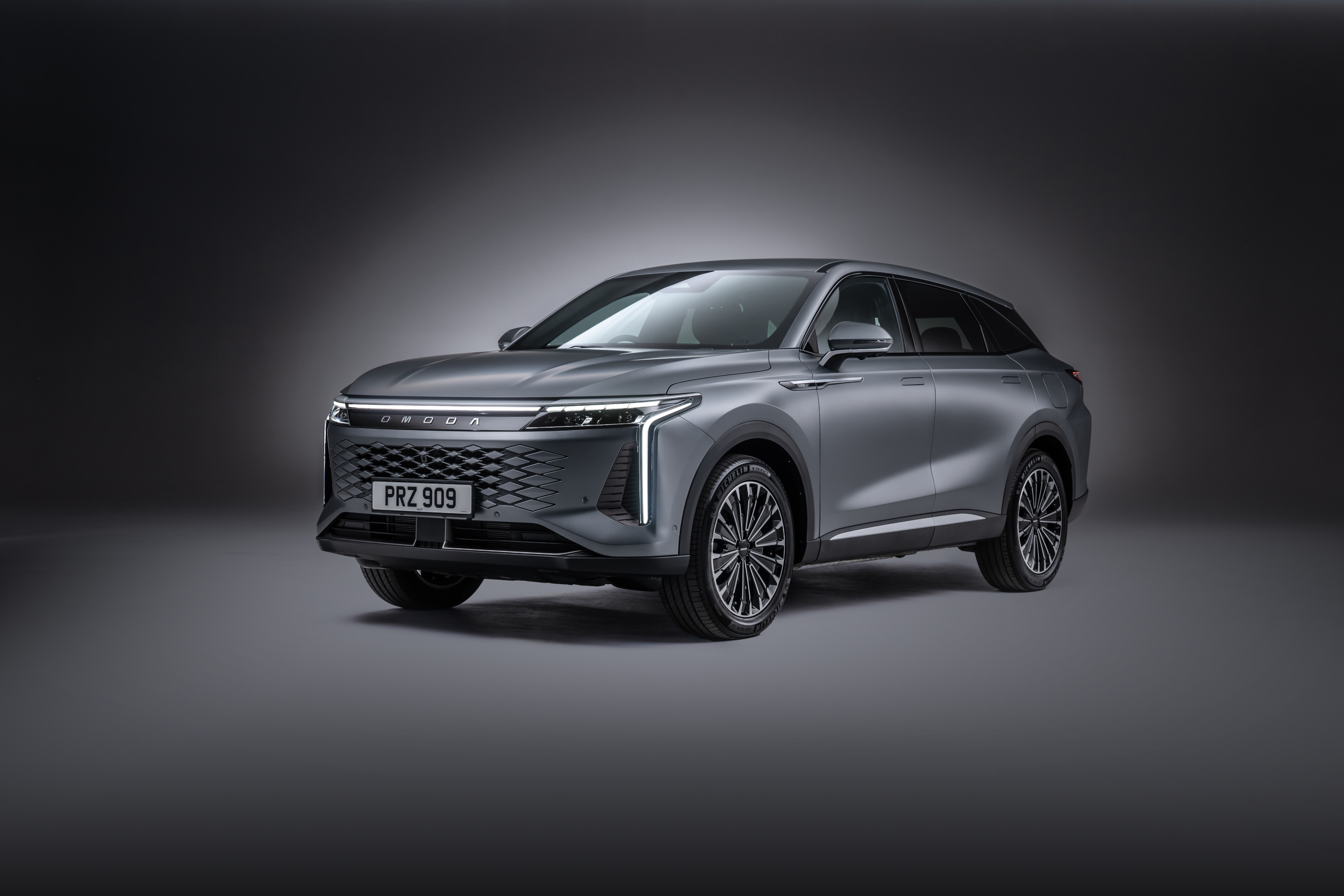
It must be galling to have followed China’s voracious and prolific auto industry down the expensive path to electrification, only to find that the country’s key manufacturers have quietly but effectively pivoted their tech efforts towards creating some of the world’s most advanced hybrid drive systems. That twin-barrelled approach is exemplified by the rise of Chery from a small engine manufacturer to a juggler of multiple brands and powertrains.
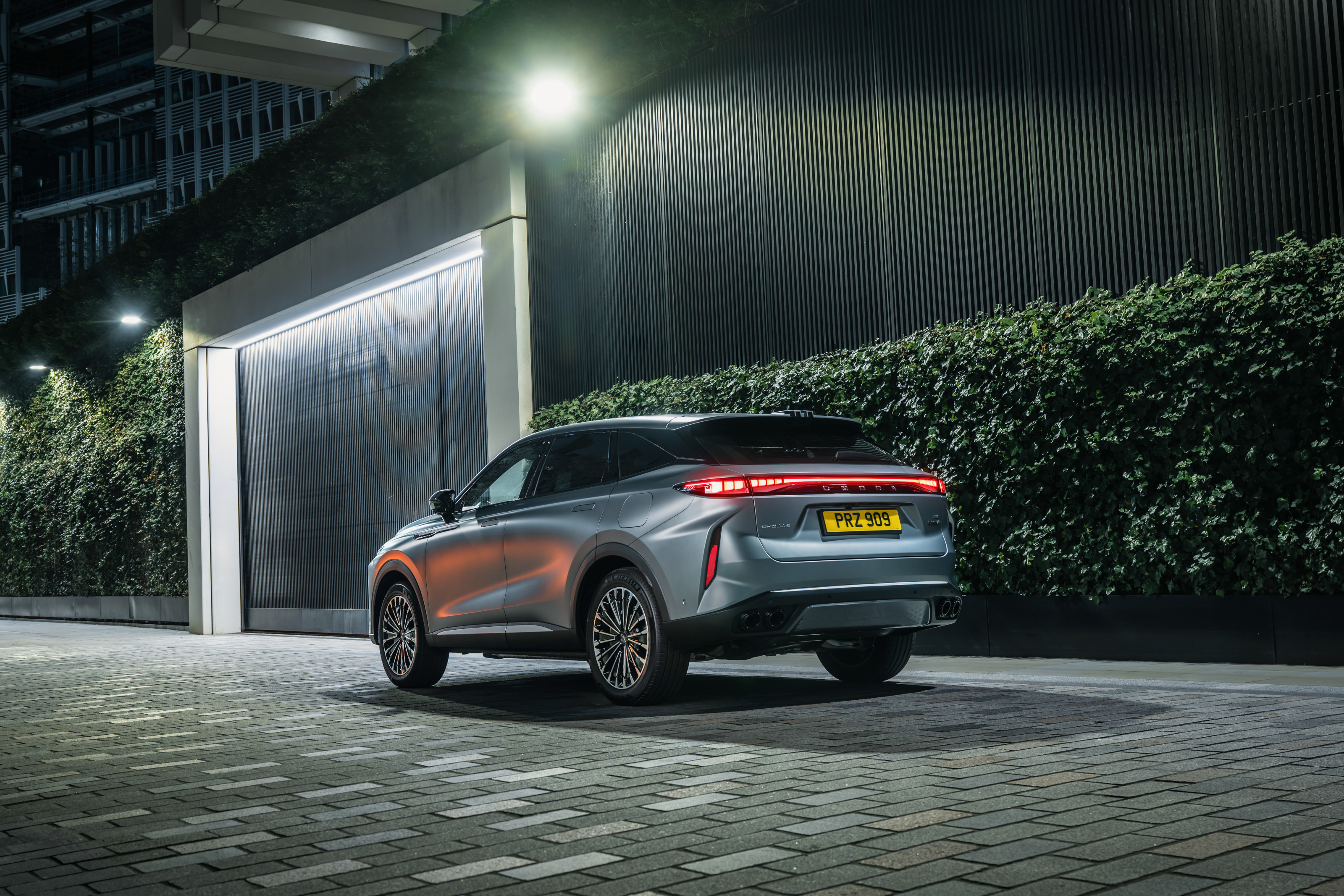
The new Omoda 9 super hybrid SUV
I’ve already stepped out in the Jaecoo 7, a modestly accomplished but value-packed hybrid SUV that bucked recent trends by also being available in a pure ICE variant. Jaecoo – the awkward collision of the German word for ‘hunter’ and that evergreen brand appellation ‘cool’ – is one of Chery’s more mass-market brands. Towards the other end of the scale is Omoda, launching in the UK with the Omoda 9 mid-sized SUV that’s pitched squarely against Audi’s Q range, the BMW X series and even the more entry-level Range Rovers.
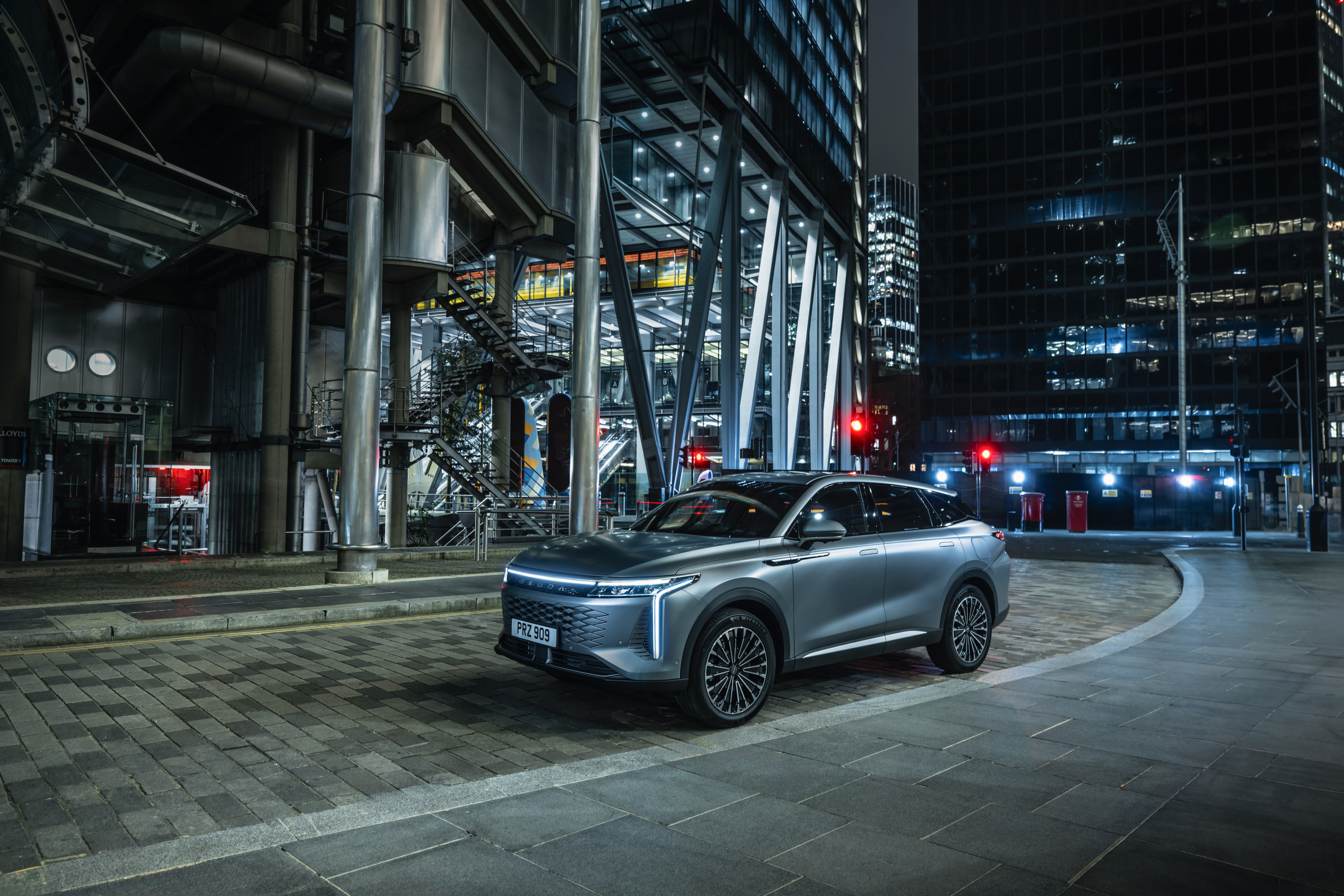
The new Omoda 9 super hybrid SUV
The market intent of Omoda is signified by the venue for the launch, a ‘House of Omoda’ set up in a palatial modern residence near the Solent in the south of England. It’s a realm of marina-adjacent modernism, where big houses try to make all the right moves but have little to no architectural soul. Instead, the space gleams like a superyacht and presumably must be perpetually scrubbed and polished to keep it that way, in true nautical fashion.

The new Omoda 9 super hybrid SUV
Although billed as a luxury brand, Omoda does occupy a price point associated with the ultra-high-end. In the UK, it sells three models, all of which are SUVs/crossovers, the conventionally powered 5, the pure electric 5E and the new 9. Coming soon is the Omoda 7. The latter two are so-called ‘super hybrids’, with the 9 fusing a relatively modest 34kW battery with a petrol engine. By cannily managing the balance between battery level and combustion output – thanks to no fewer than nine different drive modes – the Omoda 9 has a hugely impressive combined range of over 700 miles, as well as a 90-plus mile EV-only range.
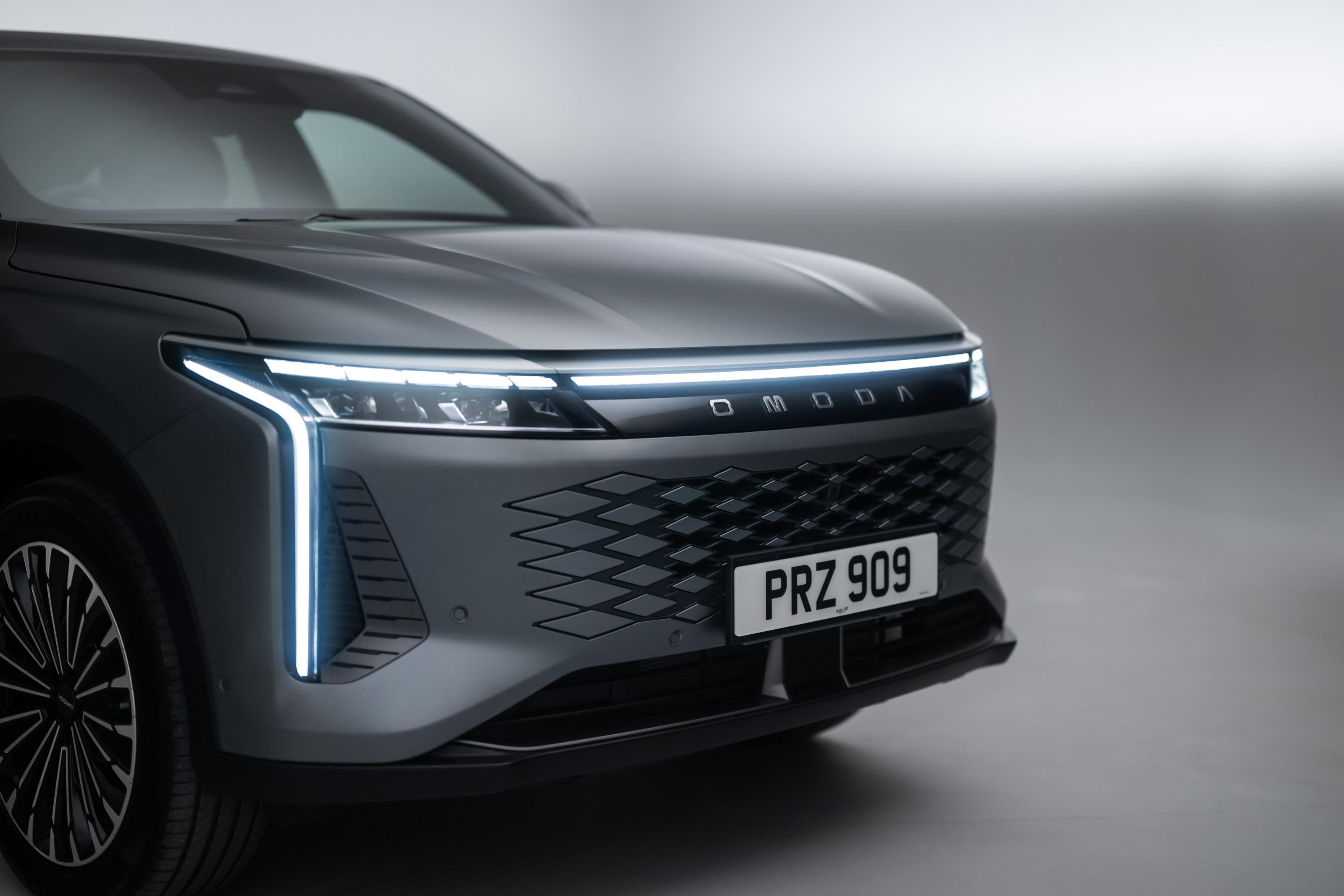
The new Omoda 9 super hybrid SUV
First impressions are dominated by that busy front end. All Omodas have grilles that are defined not by a unifying shape but by their geometric complexity, part of what the company describes as its ‘scientific design’ ethos. To illustrate this, the Omoda team throw a few choice Star Wars images into the presentation (referencing the sleek black and white space-fascist aesthetic of the Empire, rather than the grungier, ad-hoc Rebellion).
The grille brings to mind Peugeot’s more egregious frontal excesses, and is flanked by 134 LED beads for headlighting, daylight running lights (DRLs) and their accompanying welcome and exit animations. Another questionable association is flashed up, a Russian fighter jet claimed as a reference for the delta forms of the rear rooftop spoiler, its afterburners reinterpreted as exhaust pipes.
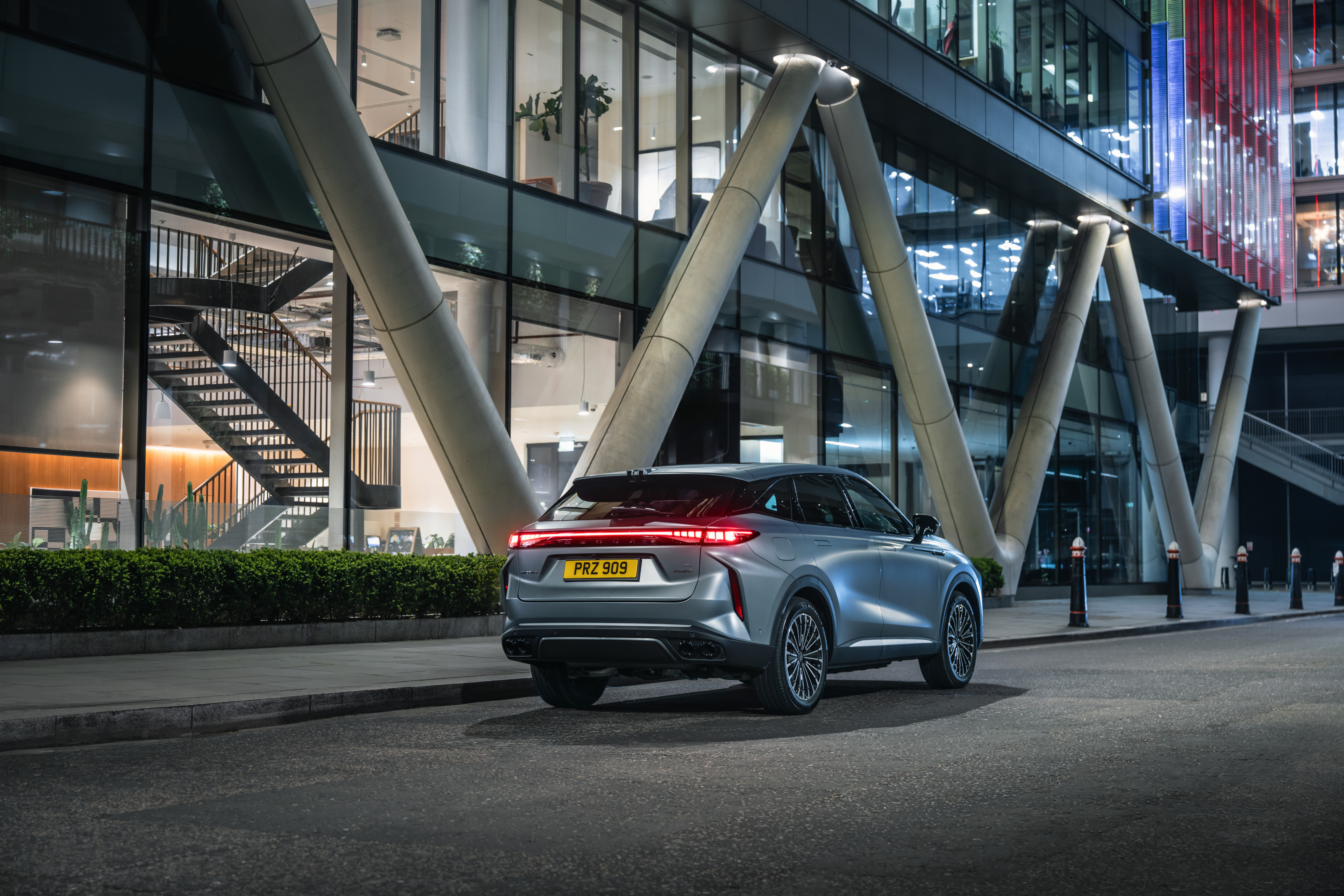
The new Omoda 9 super hybrid SUV
How does Chery do it? Since 1997 the company has built engines, eventually branching out into whole cars to take the powertrains. After a rocky start that included a few intellectual property lawsuits inspired by cars with a blatantly obvious Western influence, Chery can now claim expertise in ICE, BEV, hybrid, hydrogen fuel and cell and hydrogen-fuelled vehicles. As a result, it can pivot acrobatically to serve markets around the world, nimbly side-stepping the perils that stem from legislatively indecisive governments and swiftly following changes in consumer demand. This ability to iterate at speed is helped by factories that – the company claims – are 97 per cent automated.
Receive our daily digest of inspiration, escapism and design stories from around the world direct to your inbox.
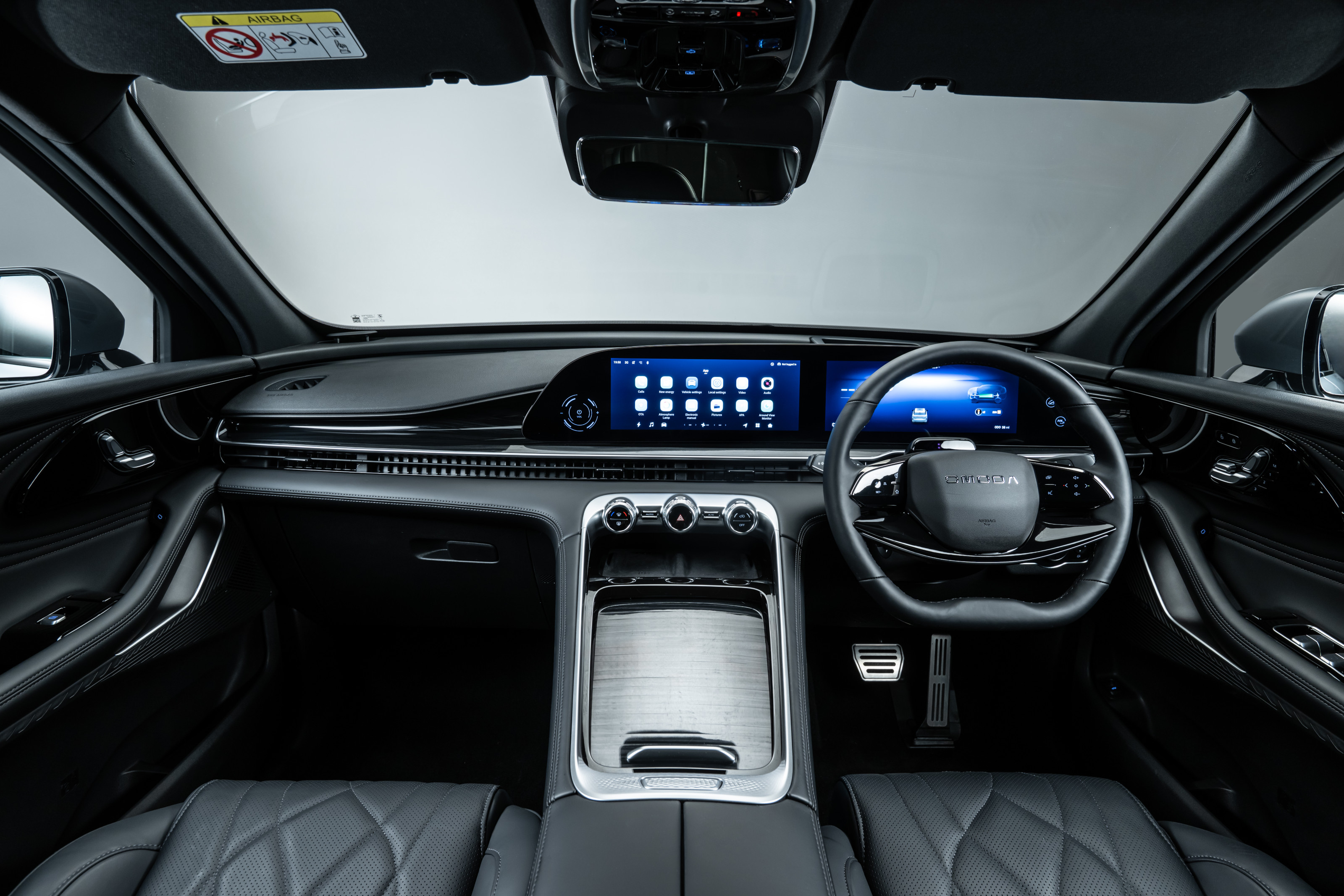
Omoda 9 dashboard
Branding is the final boss, the level the company has to beat to achieve parity with those auto manufacturers with over a century’s worth of additional experience. While heritage is an important asset for legacy manufacturers, it can also be something of an anvil around their neck. When starting from scratch with a blank sheet of paper and an empty lot, instead of clinging on to 100 years of history and a portfolio of ageing industrial real estate, it’s far easier to iterate and innovate.

Omoda 9's rear seats also recline electrically
One of Chery’s core innovations is the Dedicated Hybrid Engine and Transmission system, showing that ICE development continues apace and can, with clever marketing, be presented as a valid, eco-conscious alternative to a pure BEV.
Omoda describes itself as ‘youthful and dynamic’, with a target audience of tech-minded Gen Z consumers, digital natives who eschew the need to detox from their devices and have intense, emotional relationships through and with tech. Commodification is spliced with gamification, and rather than level up through expensive optional extras, the Omoda 9 is intended to deliver the full package in one hit, an over-stuffed loot box of an automobile.
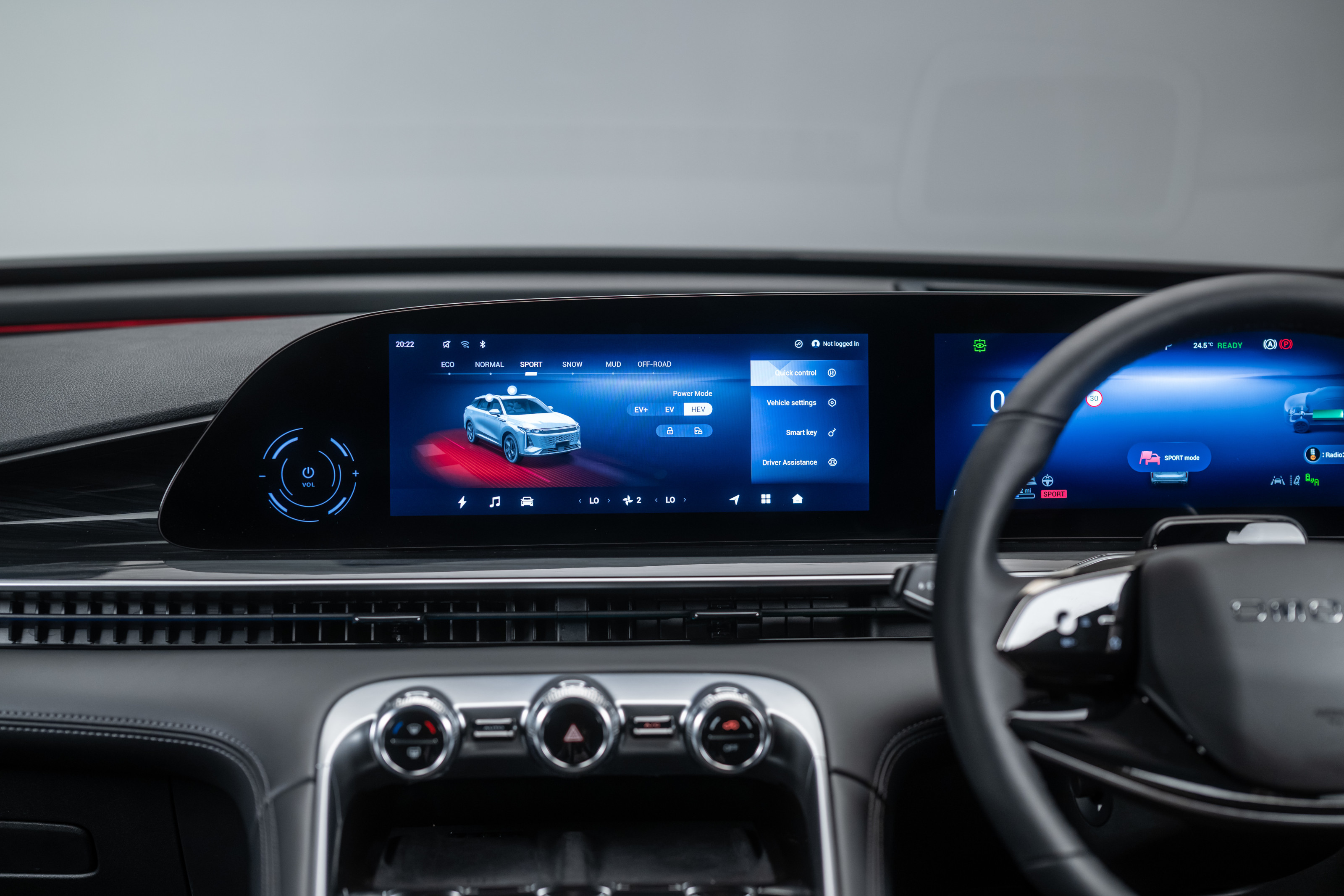
Omoda 9's instrument panel is supplemented by physical controls
There’s no denying that the 9’s standard tech and equipment list is impressive. Described as a ‘harmonious digital space’, the dashboard pairs two info screens with physical buttons for seats and HVAC. All four seats are heated and cooled, and the rear seats recline as well as the front. The driver gets a head up display, while sound comes via a 14-speaker audio system from Sony, with speakers also embedded in the headrests.
There’s the opportunity to customise everything, from the height the boot opens (should you have a low-ceilinged garage) to the colour of the mood lighting, to the amount of battery charge you want to have in store at the end of a long journey.
There’s everything but the kitchen sink in here, a fully stacked and loaded car for the price of a European rival without so much as a single optional extra
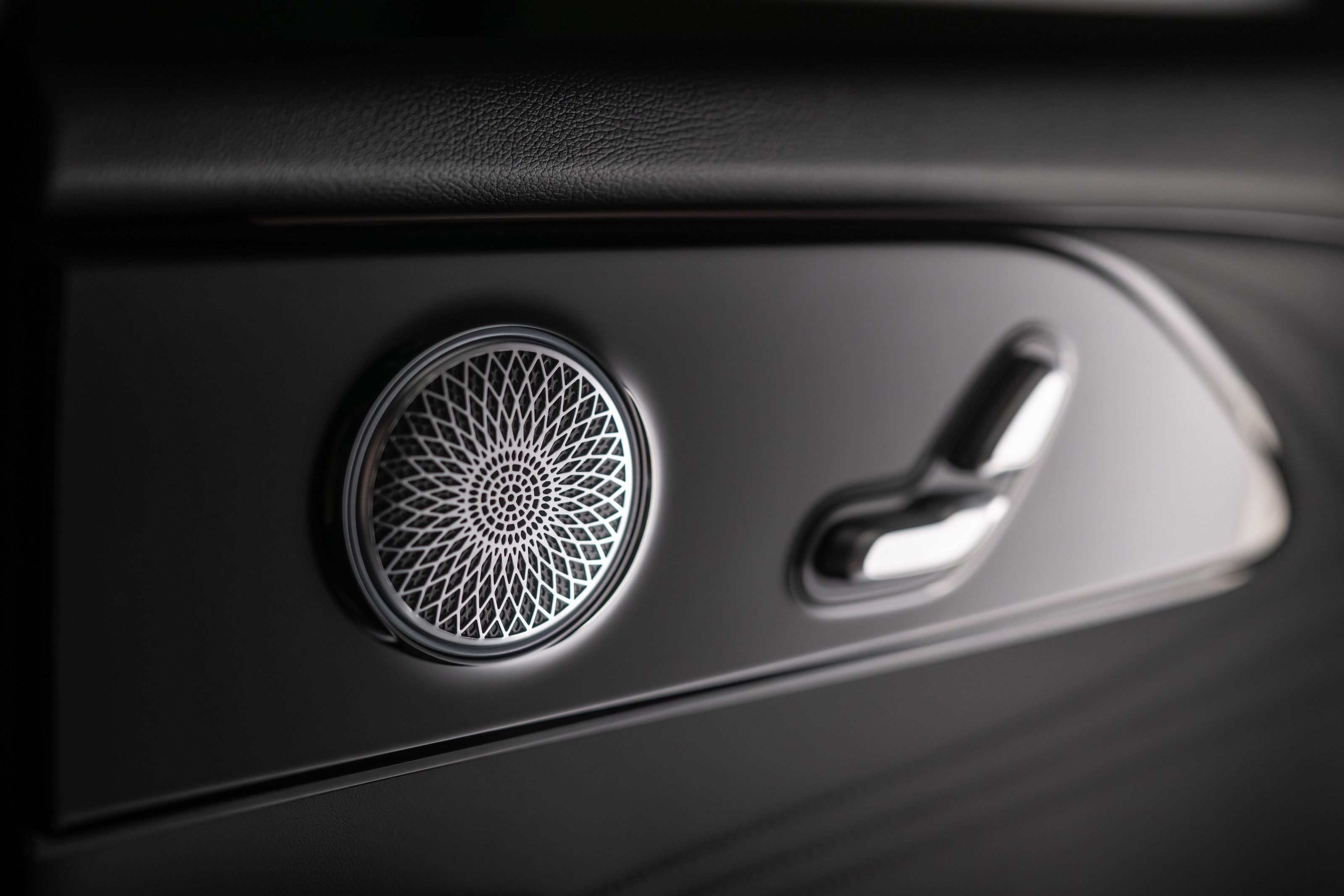
Detail design is clearly inspired by the luxury end of the market
The laundry list of ADAS functions can be added to a single shortcut button for swift disabling and there’s the usual infuriating voice assistant, which will apparently learn to differentiate between different voices over time. The car’s air monitoring system will automatically close the vents in high pollution zones like tunnels and city centres, while the comprehensive camera suite includes warning lights in the rear to stop doors being opened onto an oncoming car or bike.
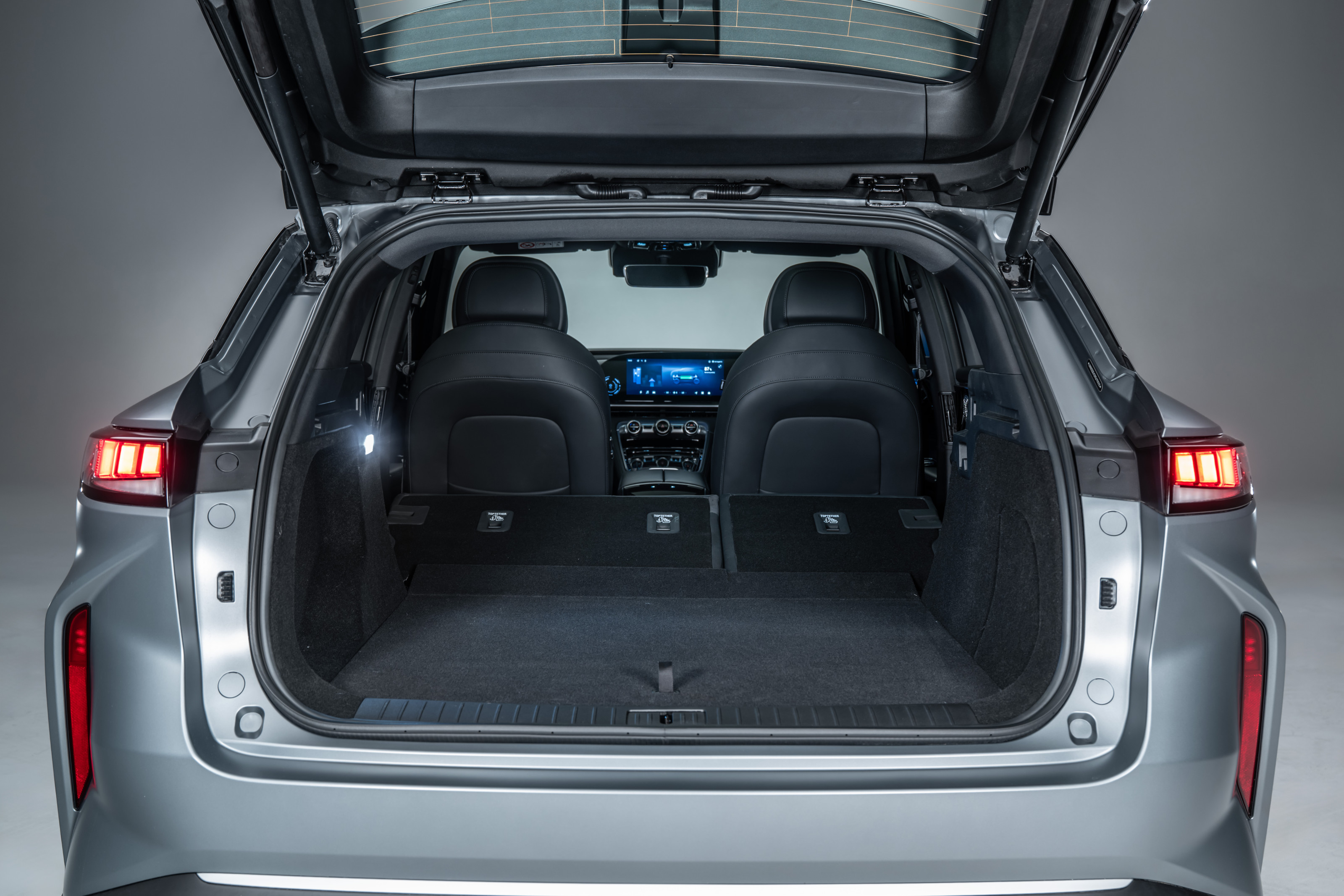
The Omoda 9 is spacious but not excessively huge
In short, there’s everything but the kitchen sink in here, a fully stacked and loaded car for the price of a European rival without so much as a single optional extra. In fact, the only you pay extra for is to switch the base colour from white.
It will be instructive to revisit this generation of EVs and PHEVs in a decade or so to see how well everything still works, but aside from a slightly wayward voice control system and the familiar rainbow-hued lighting selector, found on everything from fairy lights to smart speakers as well as upmarket SUVs, there’s no indication that quality falls below the standards set over generations by European manufacturers.
‘In China, customers want to go straight to luxury and bypass premium altogether. We always get pushed to go further’
Michael Duerr, Omoda’s design lead

Detail design in the Omoda 9
Michael Duerr, Omoda’s design lead, describes a brand ethos that has aimed high from the outset. ‘There’s no limit,’ he says. ‘We look at true luxury cars like Rolls-Royce and Bentley. In China, customers want to go straight to luxury and bypass premium altogether. We always get pushed to go further.’ Describing the interior as a ‘blank canvas for digital technology’, Duerr and his team want to create car interiors that ‘resonate with the customer’. ‘We want to score on ergonomics and space, not overloading [the passengers],’ he says, ‘we also don’t want to just copy other car brands. We look to architecture and fashion – especially Chinese fashion – as well as art. We really want customers to make a conscious decision to buy a Chinese car.’

Inside and out, the Omoda 9 keeps pace with the style of its more established rivals
Chery’s spread of nameplates bears out the stark divide between high end and base models. Omoda – a composite name that nods to fashion via the phrase ‘original mode’ – is sold alongside Jaecoo in Europe. Headquartered in Wuhu, about 300km west of Shanghai, Chery continues to make cars under its own name. The current line-up includes the Arrizo saloons and Tiggo SUVs and the newly announced Lepas line, ’designed for the next-generation urban elites’ (their words, not mine).
It also owns the higher-end Jetour and Exeed brands (the latter in partnership with Huawei), the Karry range of light trucks and minivans, and the iCar EV-only brand, with its tempting-looking iCar GT sports car. Chery is part-owner of the budget-friendly brands Soueast and Kaiyi Auto. Finally, there’s a partnership with JLR, which was licensed to produce Jaguar Land Rover products in Changshu and also introduce the Freelander name as a standalone Chinese-made SUV brand for global export.

The Omoda 9's best angle
Despite its impressive specification and the emotive words and imagery, the Omoda 9 isn’t really massively groundbreaking in terms of design. A generic SUV with a silhouette I would be hard pushed to pick out of a line-up of its peers, let alone a car park, it has the short front and long rear overhangs that have become ubiquitous in the sector. Proportioned to favour a weightier body, slender greenhouse and familiar rakish rear screen, the car works best in profile, where the wheel placement isn’t unbalanced by the tall front and rear elevations.
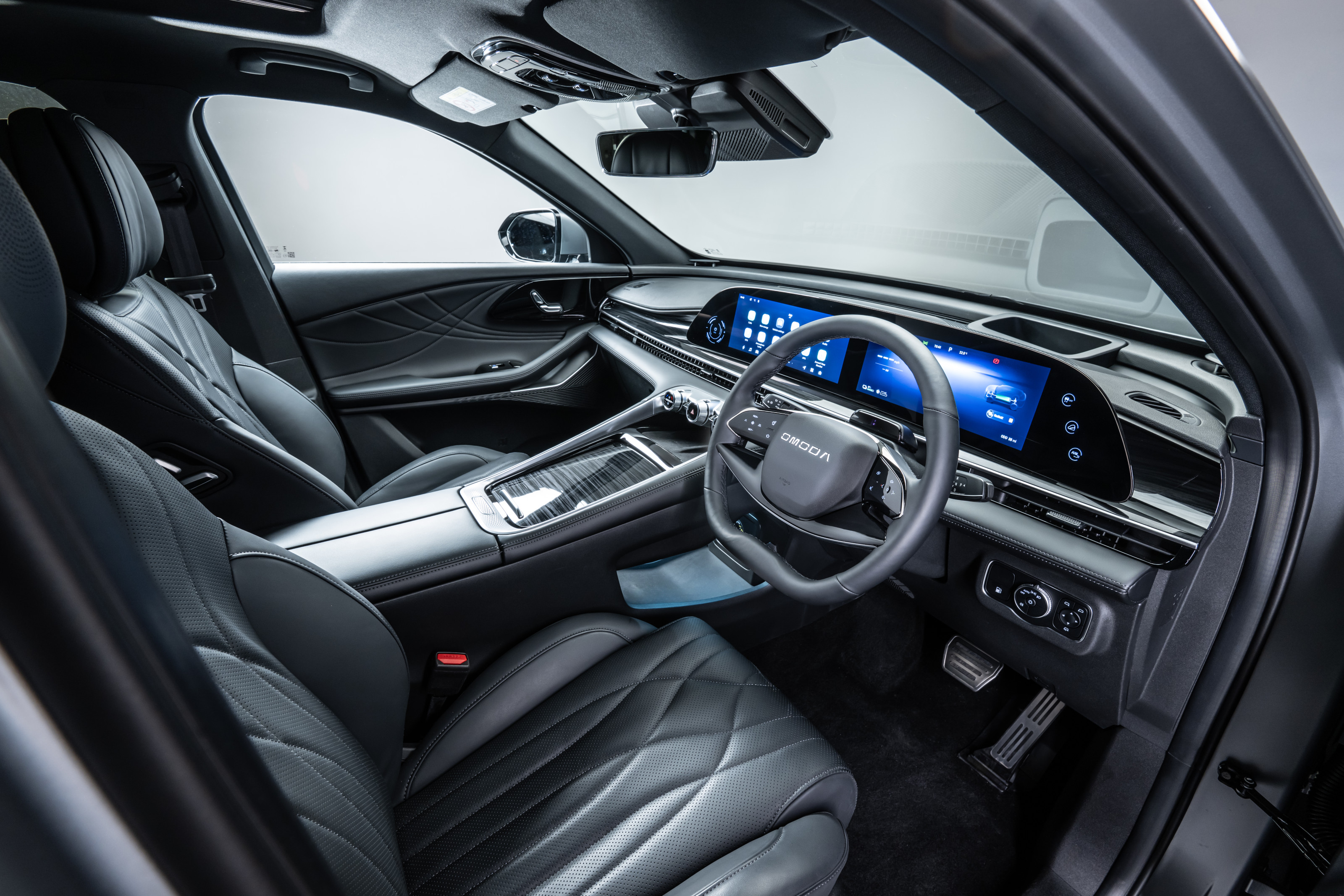
The well specified cabin is inviting, albeit with 'vegan leather' and traditional style stitching patterns
Where the Omoda 9 really scores in the luxury stakes is the sense of unlimited freedom that a long, long range brings you
On the road, the Omoda 9’s flat-bottomed steering wheel feels a tiny bit too large, which in turn draws more attention to the overly light and rather vague steering. Even in Sport mode, it barely firms up, confining the delivery of power to the straights and overtaking manoeuvres, rather than on twisty roads. Eco mode offers up a lot of regen, and despite the dynamic wooliness, Sport mode is very rapid indeed. The so-called Super Hybrid System is truly impressive and really does give impressive economy thanks to an electric range that could well be all you ever use, especially if you have a home charge point.
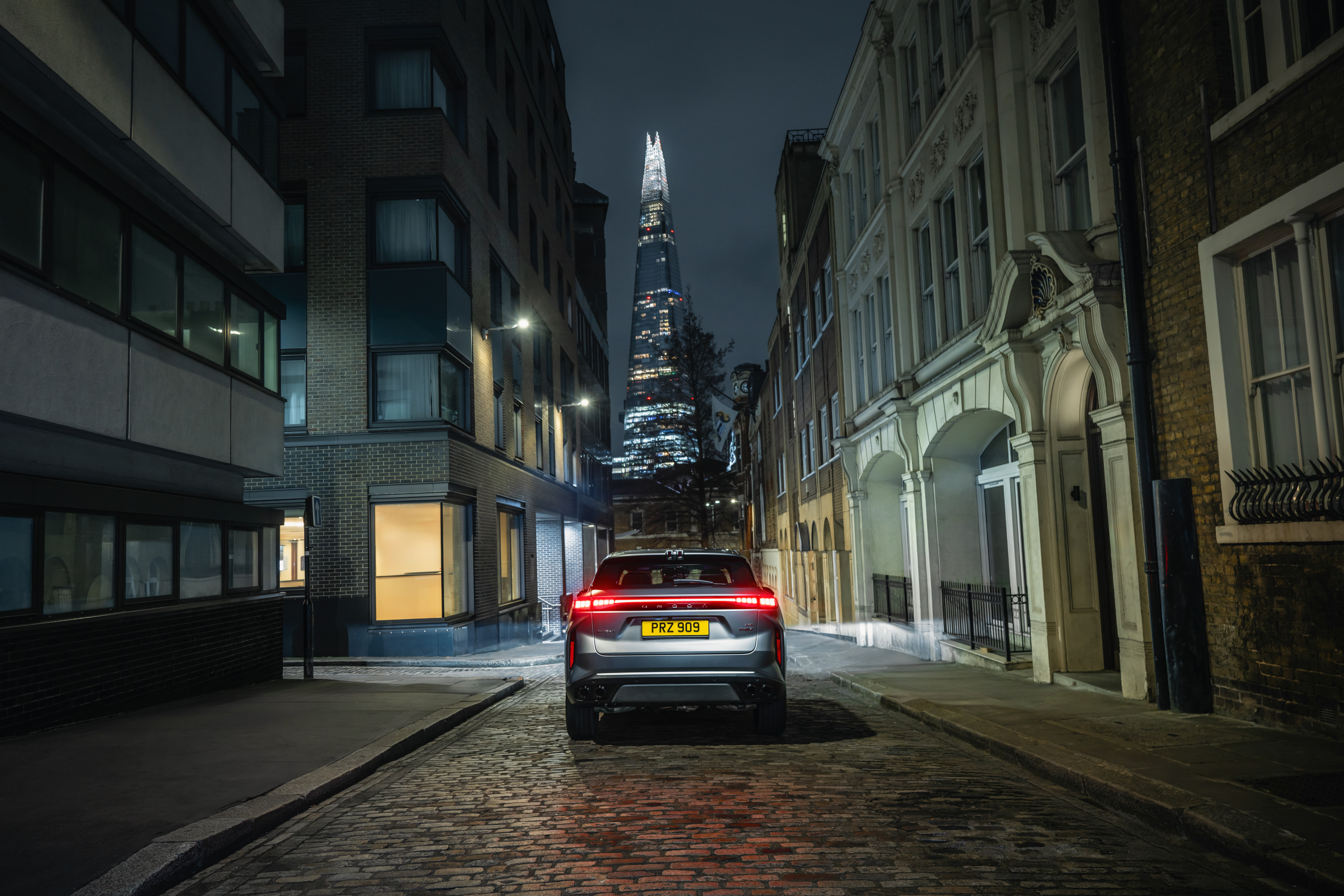
The new Omoda 9
Regardless of the oodles of kit and luxury talking points, where the 9 really scores in the luxury stakes is the sense of unlimited freedom that a long, long range brings you. With no equivalent hybrid systems available from non-Chinese brands, it’s another example of swift tech shifts leaving more established manufacturers struggling to catch up.
OMODA 9 SHS, £44,990, OmodaAuto.co.uk, @Omoda_UK
Jonathan Bell has written for Wallpaper* magazine since 1999, covering everything from architecture and transport design to books, tech and graphic design. He is now the magazine’s Transport and Technology Editor. Jonathan has written and edited 15 books, including Concept Car Design, 21st Century House, and The New Modern House. He is also the host of Wallpaper’s first podcast.
-
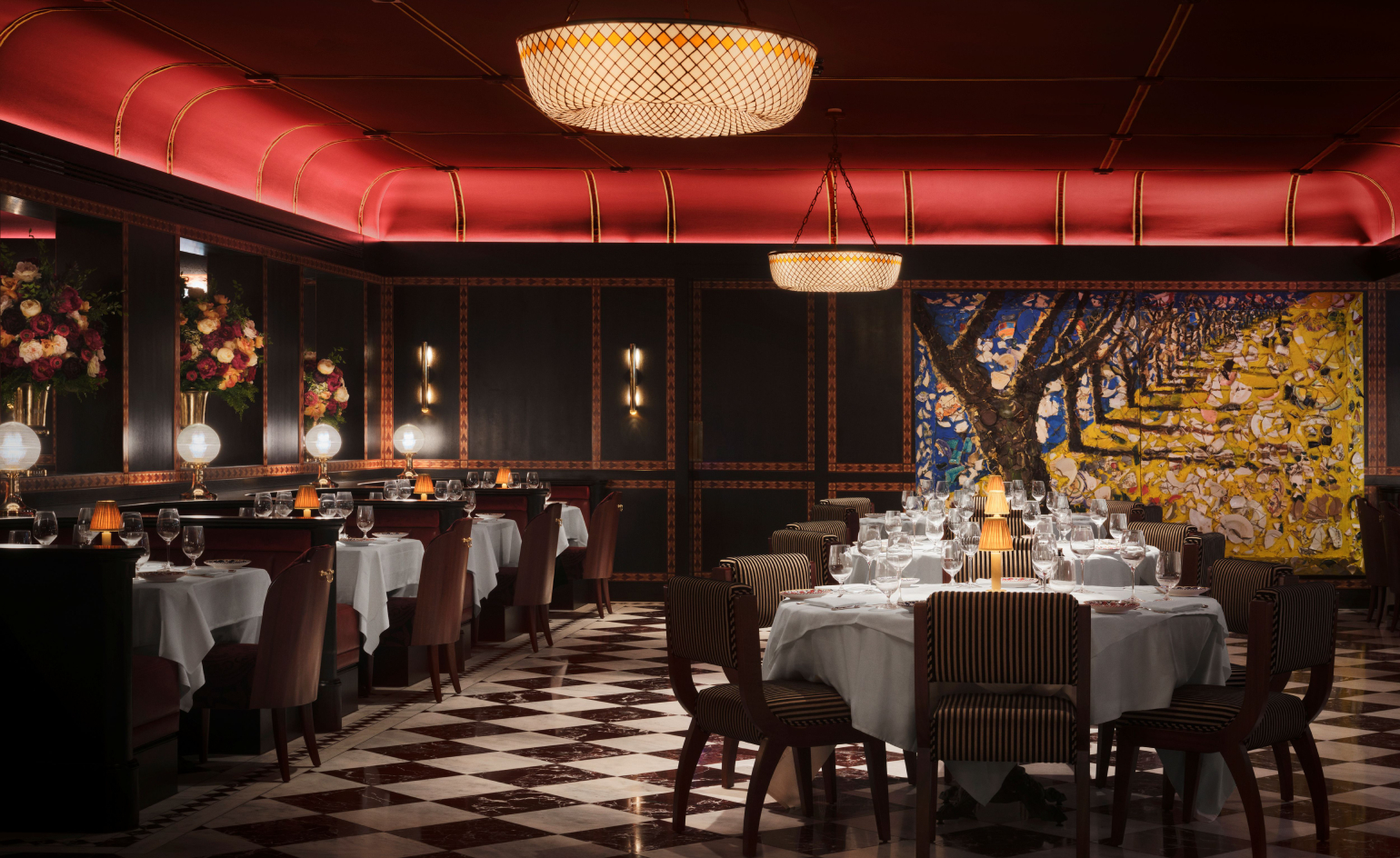 Here’s what to order (and admire) at Carbone London
Here’s what to order (and admire) at Carbone LondonNew York’s favourite, and buzziest, Italian restaurant arrives in the British capital, marking the brand’s first expansion into Europe
-
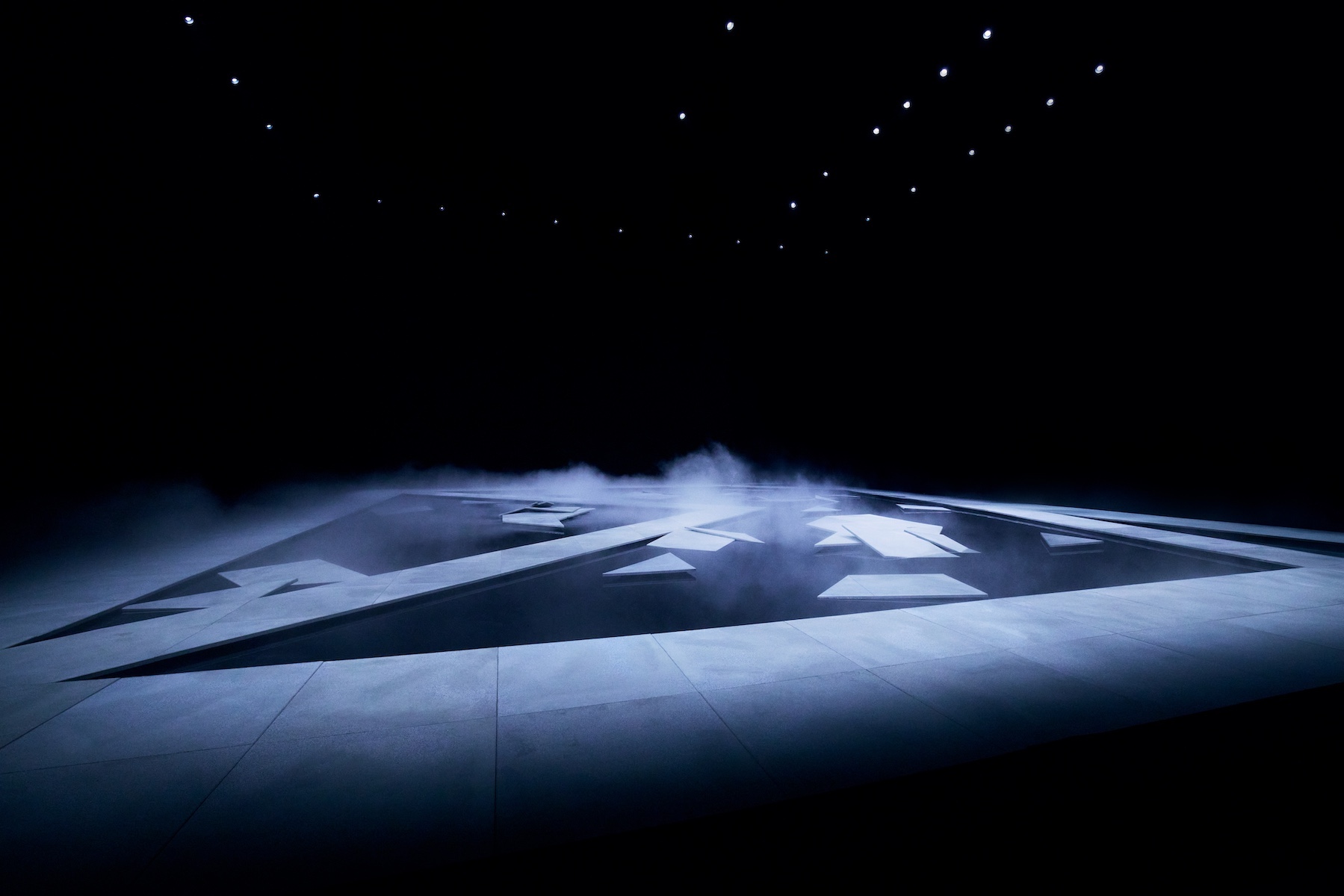 Griffin Frazen on conceiving the cinematic runway sets for New York label Khaite: ‘If people feel moved we’ve succeeded’
Griffin Frazen on conceiving the cinematic runway sets for New York label Khaite: ‘If people feel moved we’ve succeeded’The architectural designer – who helped conceive the sets for ‘The Brutalist’ – collaborates with his wife Catherine Holstein on the scenography for her Khaite runway shows, the latest of which took place in NYFW this past weekend
-
 How to travel meaningfully in an increasingly generic world
How to travel meaningfully in an increasingly generic worldLauren Ho explores the need for resonance, not reach, in the way we choose to make journeys of discovery
-
 We take the new Jaecoo 7 SUV along South Africa’s famous Garden Route
We take the new Jaecoo 7 SUV along South Africa’s famous Garden RouteEndurance, efficiency and economic soft power, Wallpaper* experiences China’s new SUV challenger on a gentle safari across South Africa
-
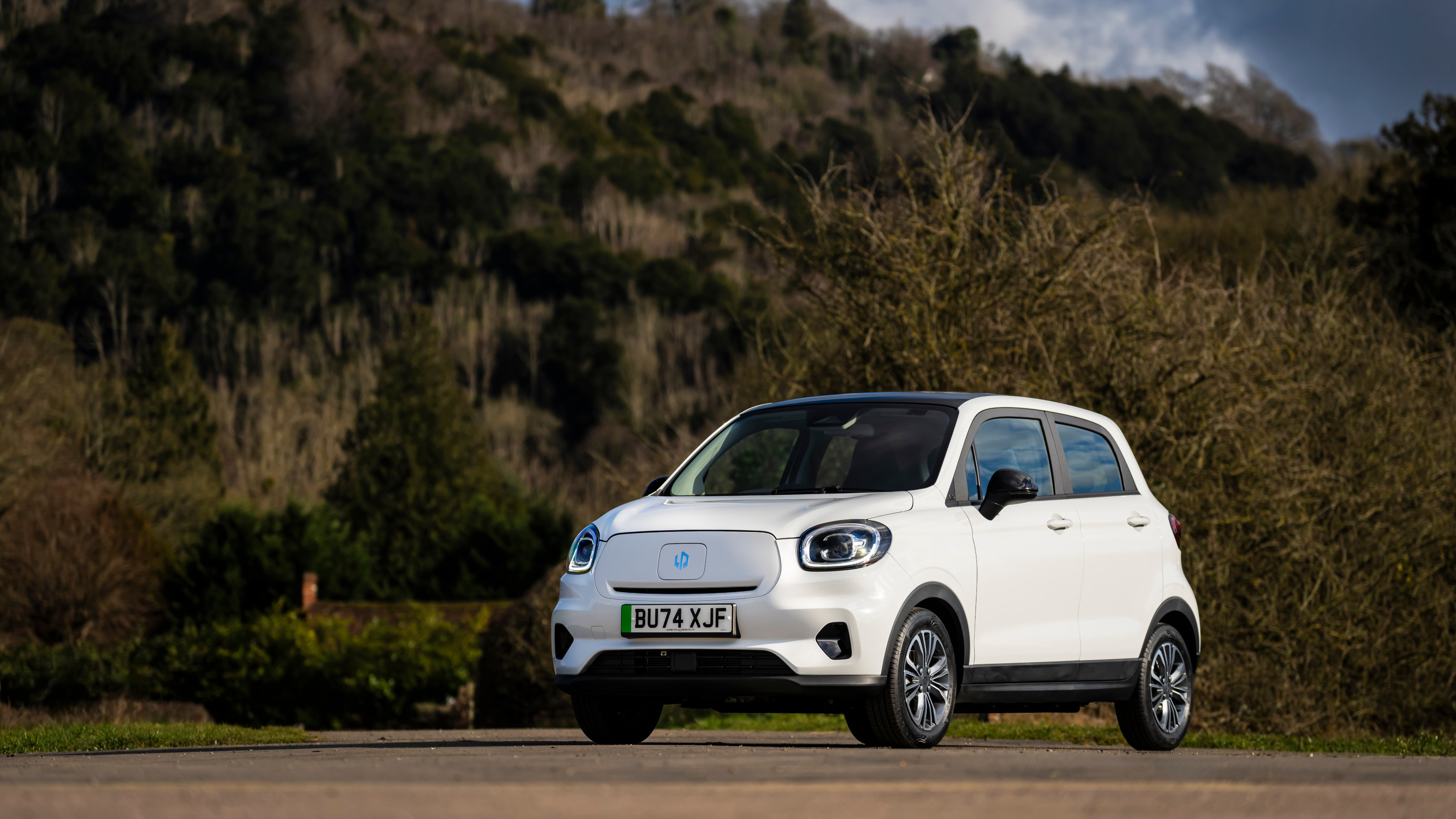 China’s Leapmotor pounces on the European car market with its T03 city car and C10 SUV
China’s Leapmotor pounces on the European car market with its T03 city car and C10 SUVLeapmotor’s tiny electric city car could be just the tonic for cramped urban Europe. We sample the T03 and its new sibling, the fully loaded C10 SUV, to see if the company’s value proposition stacks up
-
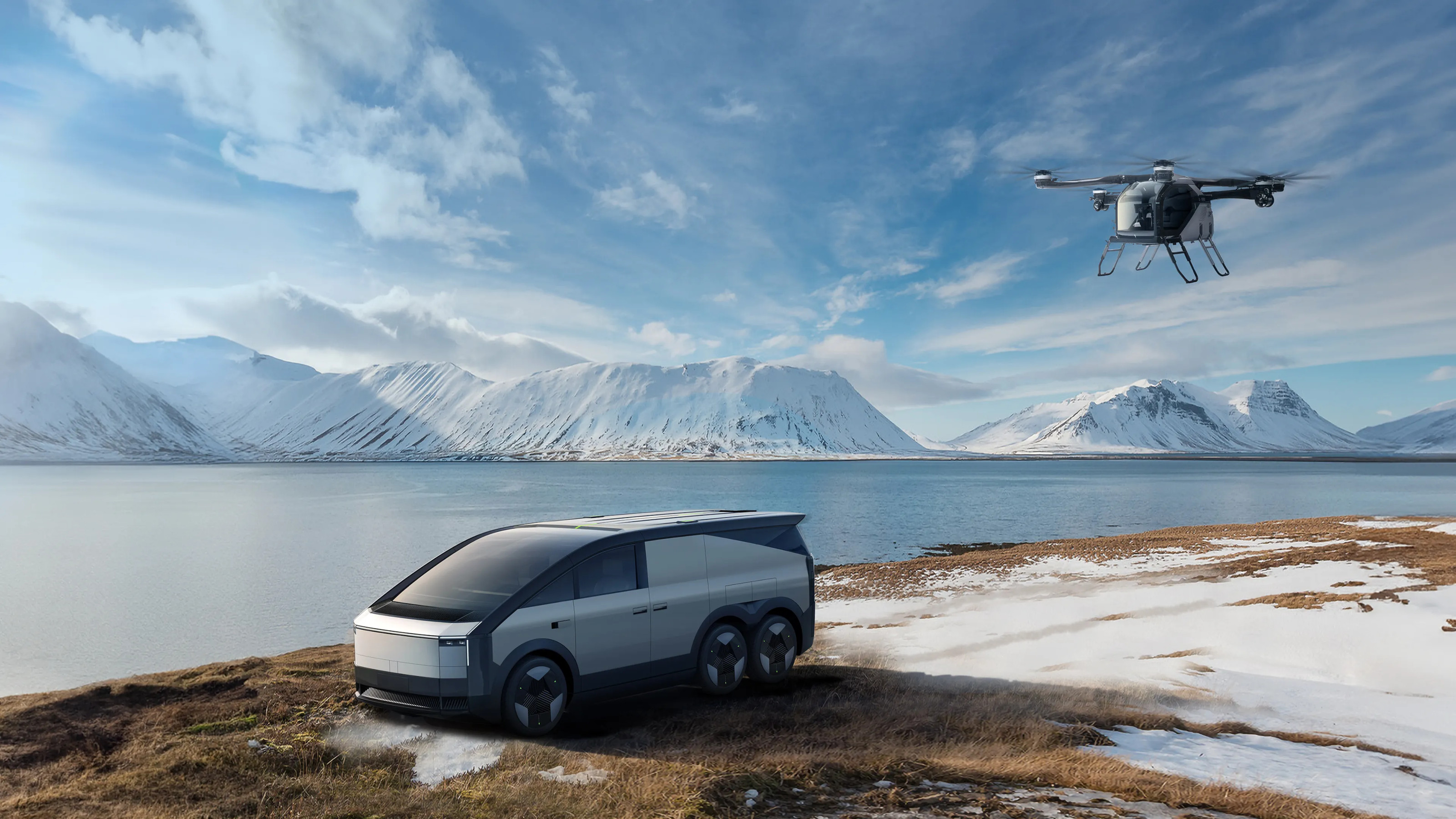 Taking off? XPeng Aero HT promises world’s first all-electric ‘Land Aircraft Carrier’
Taking off? XPeng Aero HT promises world’s first all-electric ‘Land Aircraft Carrier’Six wheels, six rotors, four seats and an aesthetic that bests even the boldest futurologist – Chinese manufacturer XPeng looks to the skies with this truck and its onboard flying machine
-
 The innovations and eccentricities coming soon from the Chinese auto industry
The innovations and eccentricities coming soon from the Chinese auto industryChina accounts for 75 per cent of new EVs, and new models arrive on a weekly basis. Here are some of the key brands looking to reshape the automotive landscape in the years to come
-
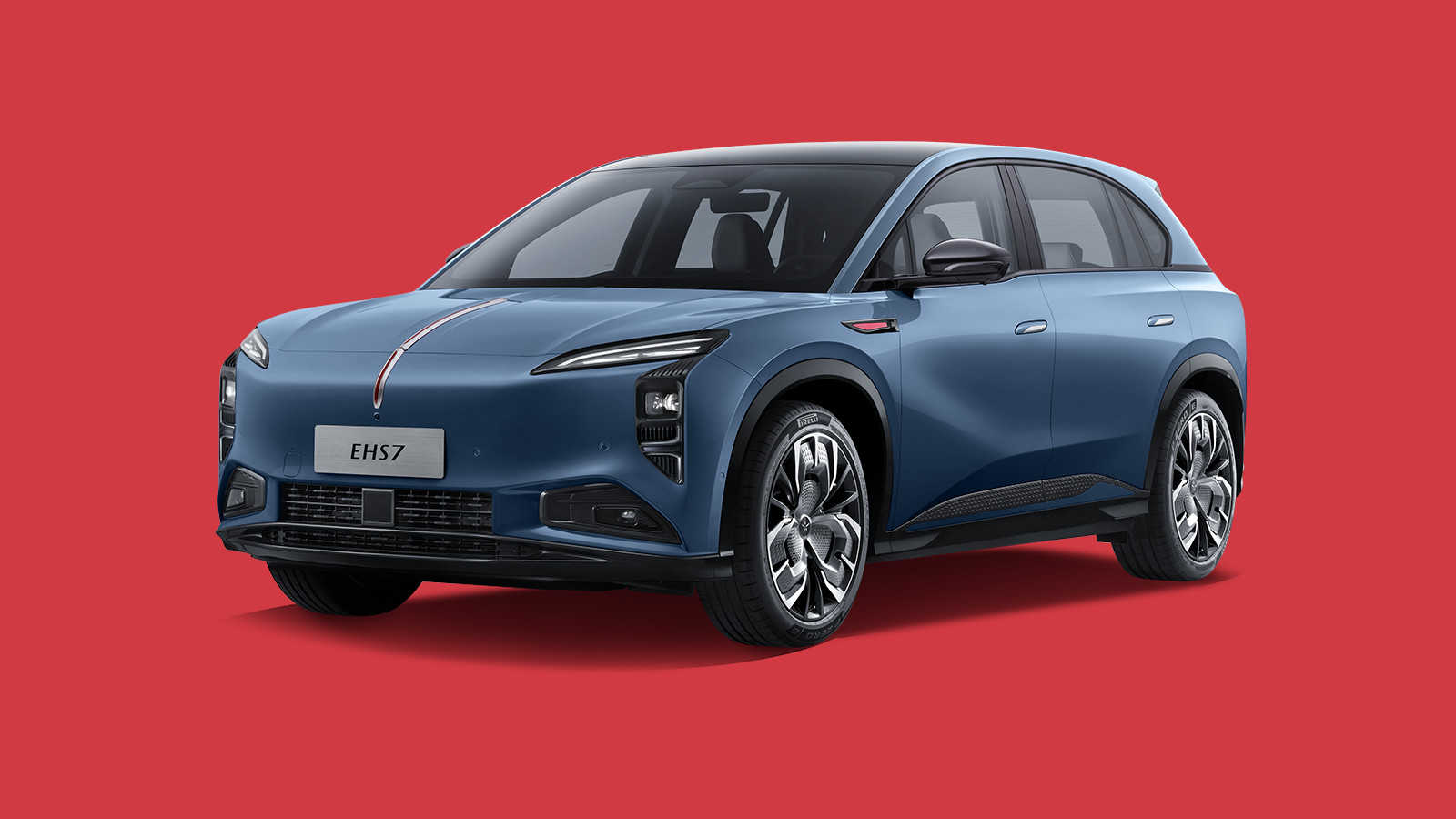 Hongqi’s Giles Taylor on the Chinese car maker's imminent arrival in the UK
Hongqi’s Giles Taylor on the Chinese car maker's imminent arrival in the UKHongqi makes China's state limousines. By 2026, it'll have a pair of premium EVs on UK roads. Giles Taylor, its VP of design, tells us about its design approach, and ambition in Europe
-
 Volvo EM90 is the brand’s all-electric first foray into the Multi-Purpose Vehicle
Volvo EM90 is the brand’s all-electric first foray into the Multi-Purpose VehicleSo far only China will get the new Volvo EM90 MPV; we think it has global potential
-
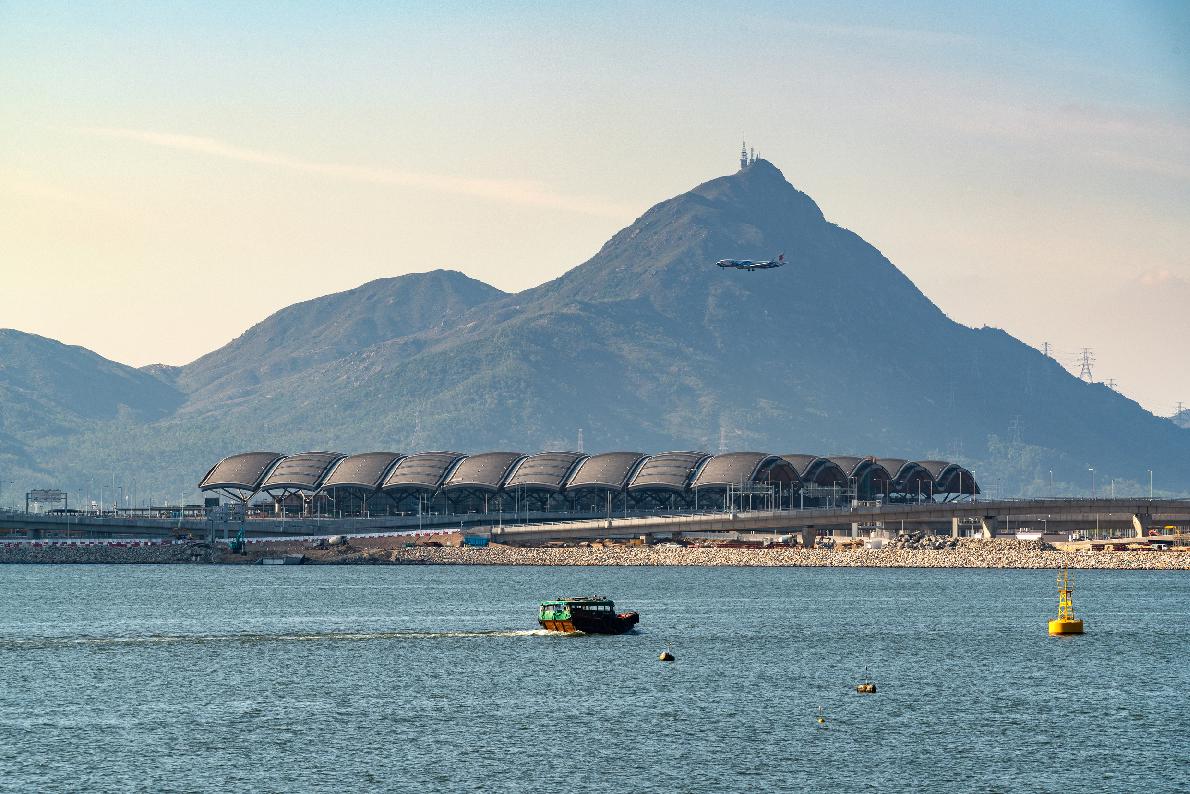 Hong Kong Boundary Crossing building by RSHP and Aedas takes travel to a new level
Hong Kong Boundary Crossing building by RSHP and Aedas takes travel to a new level -
 Maverick car designer Chris Bangle on China’s electric answer to megacity commuting
Maverick car designer Chris Bangle on China’s electric answer to megacity commuting